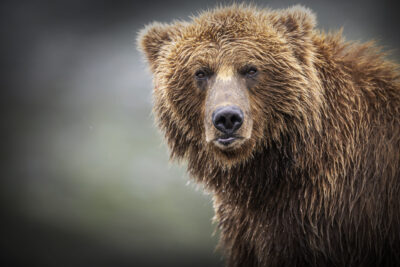
From The North Pole To A Pendle Village
by Adam Partridge
The Journey of a Magic Lantern
Known for regular appearances on Flog It!, Bargain Hunt, Dickinson’s Real Deal and Cash In The Attic, and one of the UK’s finest antique experts and auctioneers – Adam Partridge explores the magic world of the early projector shows.

Technology has moved so fast over the last couple of decades, with even basic electrical items like toasters being available today with WIFI and Bluetooth.
But what about 130 years ago, when whipping a cone-shaped piece of wood was the highlight of children’s entertainment? These were the years when there was a thirst for information and excitement, about events happening in distant lands.
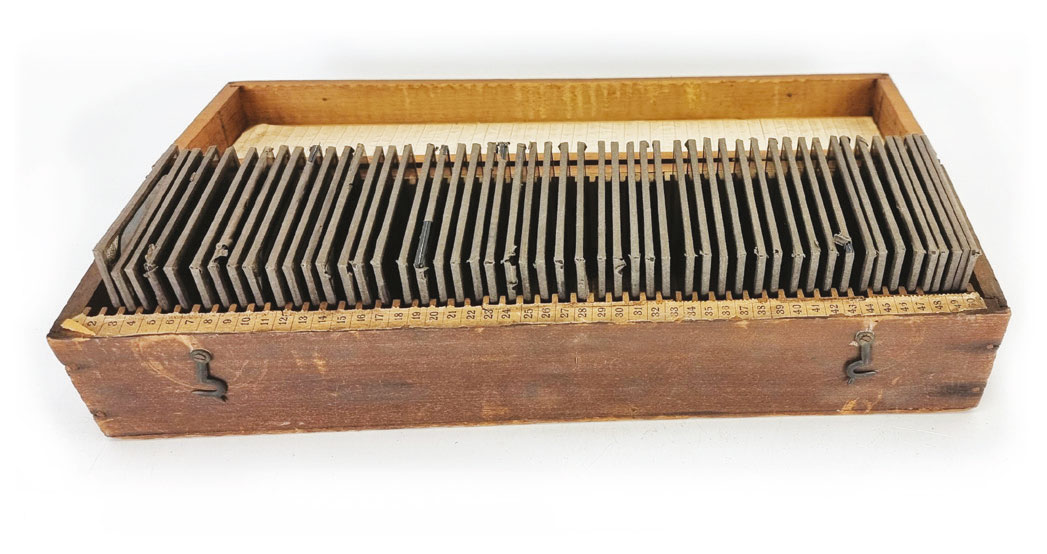
A magic lantern converted to use a bulb instead of candle. Box of slides. Slides showing the expedition sailors, studies and an illustration of a polar bear attack
On a recent call to a home in Burnley, my Lancashire senior valuer Steven Parkinson was given a long wooden box of glass slides and asked, ‘Do you sell this sort of thing? Oh, and I also have a magic lantern’.
THERE WAS A THIRST FOR INFORMATION AND EXCITEMENT ESPECIALLY ABOUT EVENTS HAPPENING IN DISTANT LANDS
What is a magic lantern? Well, it’s not from Aladdin, and there is certainly no genie. Before cinema became popular, travelling entertainers would turn up to a village or a church hall with a white wall or blanket as a screen and set up the magic lantern. It was probably called that to entice and intrigue. However, it is just a projector with a candle and a strong magnifier lens that projects the image from a glass slide onto the screen. There would be a person who would tell stories or narrate the events on the screen to an audience of locals who would have paid a penny for entry. A bit like a night out at the pictures, this would have been very exciting at the time.
The subjects would range from fairy stories for the children to current events for the adults; this brings us nicely to what was in the wooden box.
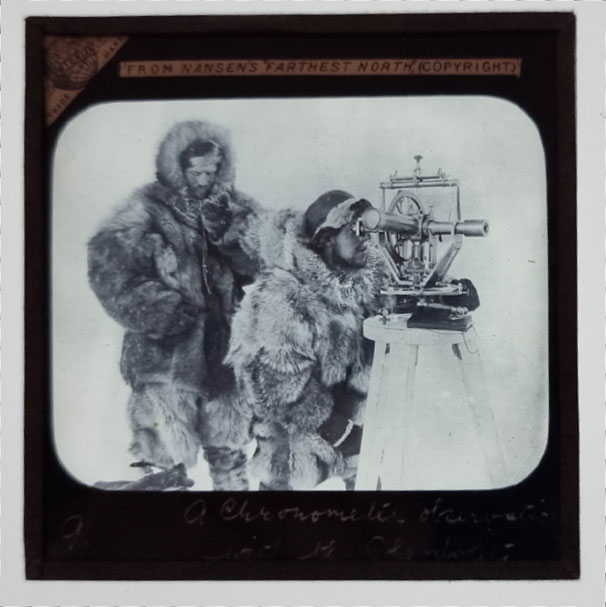
Scientists taking measurements
In 1893 a Norwegian explorer called Fridtjof Wedel-Jarlsberg Nansen set off for what is now known as the Fram expedition of 1893–1896, which was an attempt by the Norwegian explorer to reach the geographical North Pole by harnessing the natural east–west current of the Arctic Ocean. He didn’t actually succeed in getting to the North pole, but the Fram expedition finally put an end to the “Open Polar Sea” theory, and made numerous scientific observations, providing the first oceanographic data from the central Arctic. It was to become a book titled “Nansen’s Farthest North.”
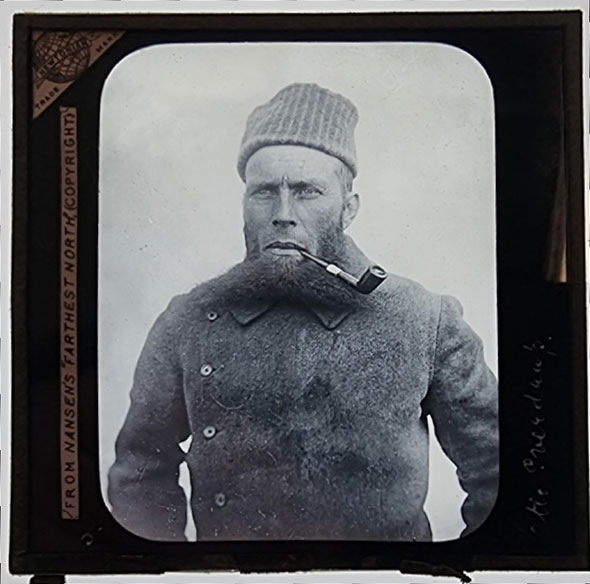
A man on the expedition.
Photographs that were taken on the expedition include portraits of the sailors and scientists, meteorological studies, a frozen ship in the snow and ice and also a drawn illustration titled “You must look sharp” showing a polar bear attack.
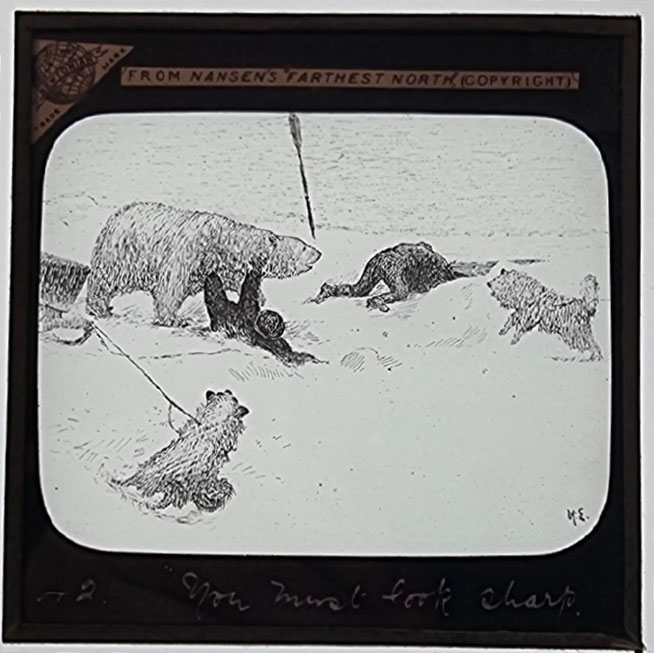
You must look sharp.
There are approx. 51 slides in the set and even though only worth £150 -£200 these would have entertained and captivated the minds of many a young person and may also have been the inspiration for other great explorers of the 20th century. This is a great piece of social history.
NorthernLife July/Aug 23

